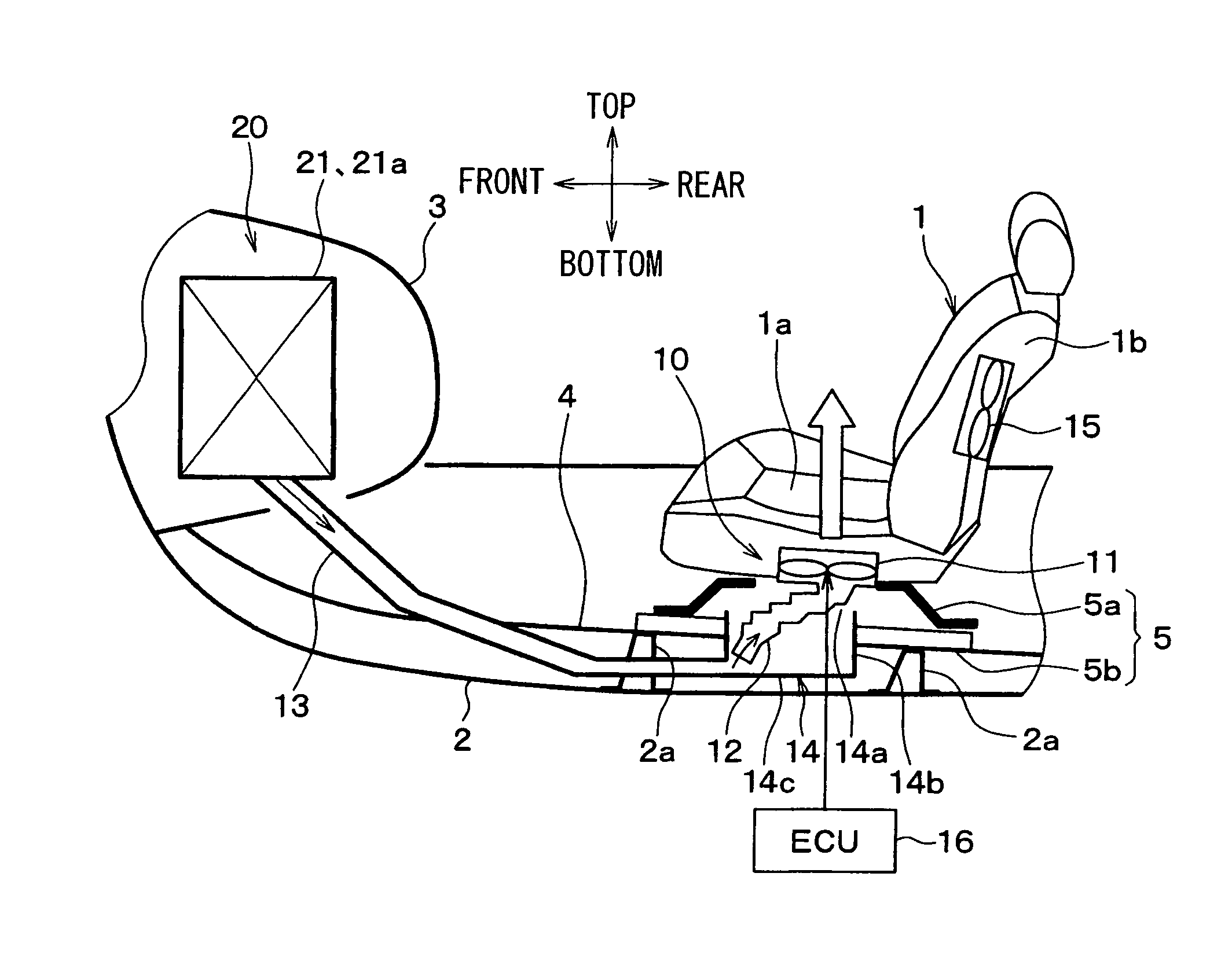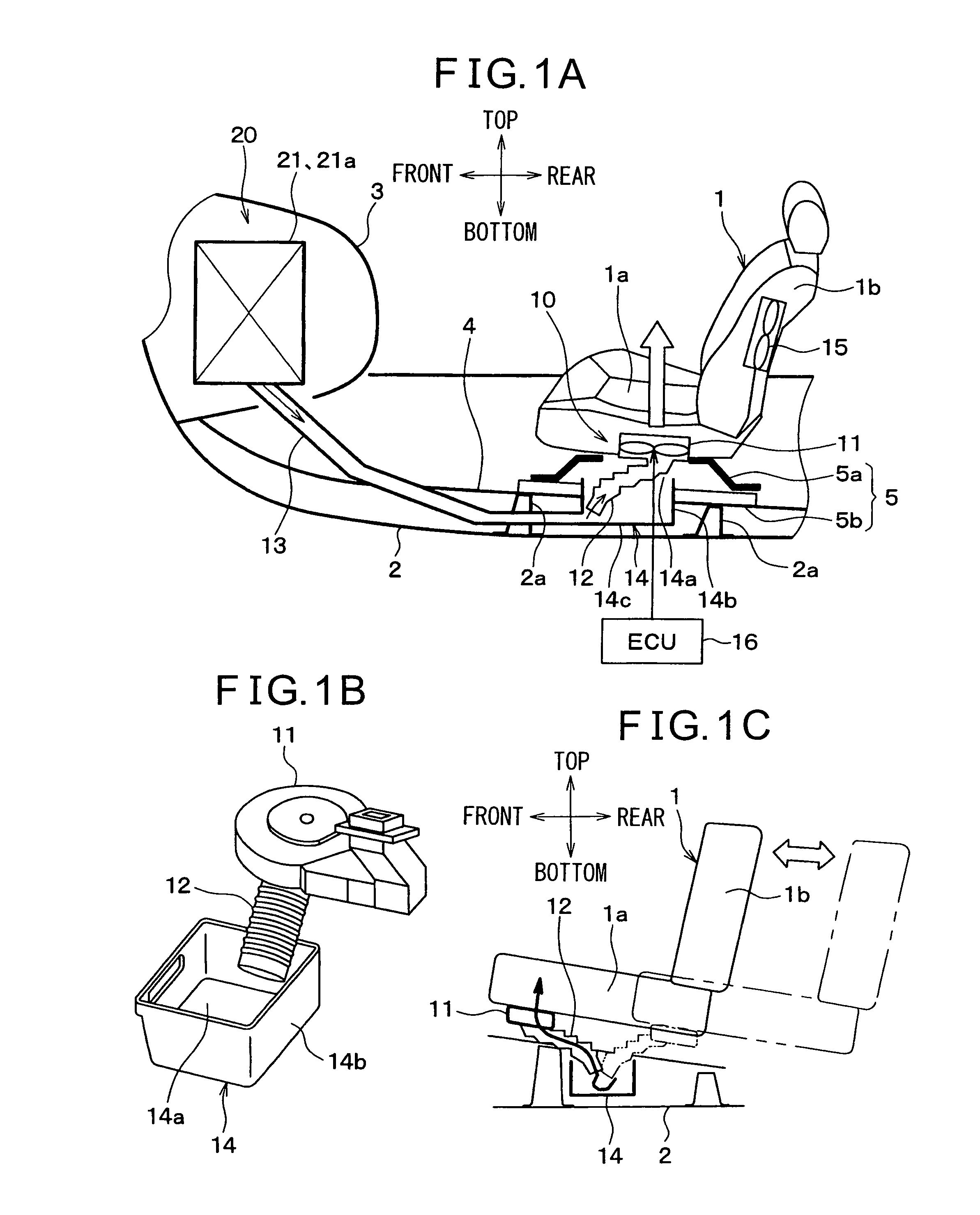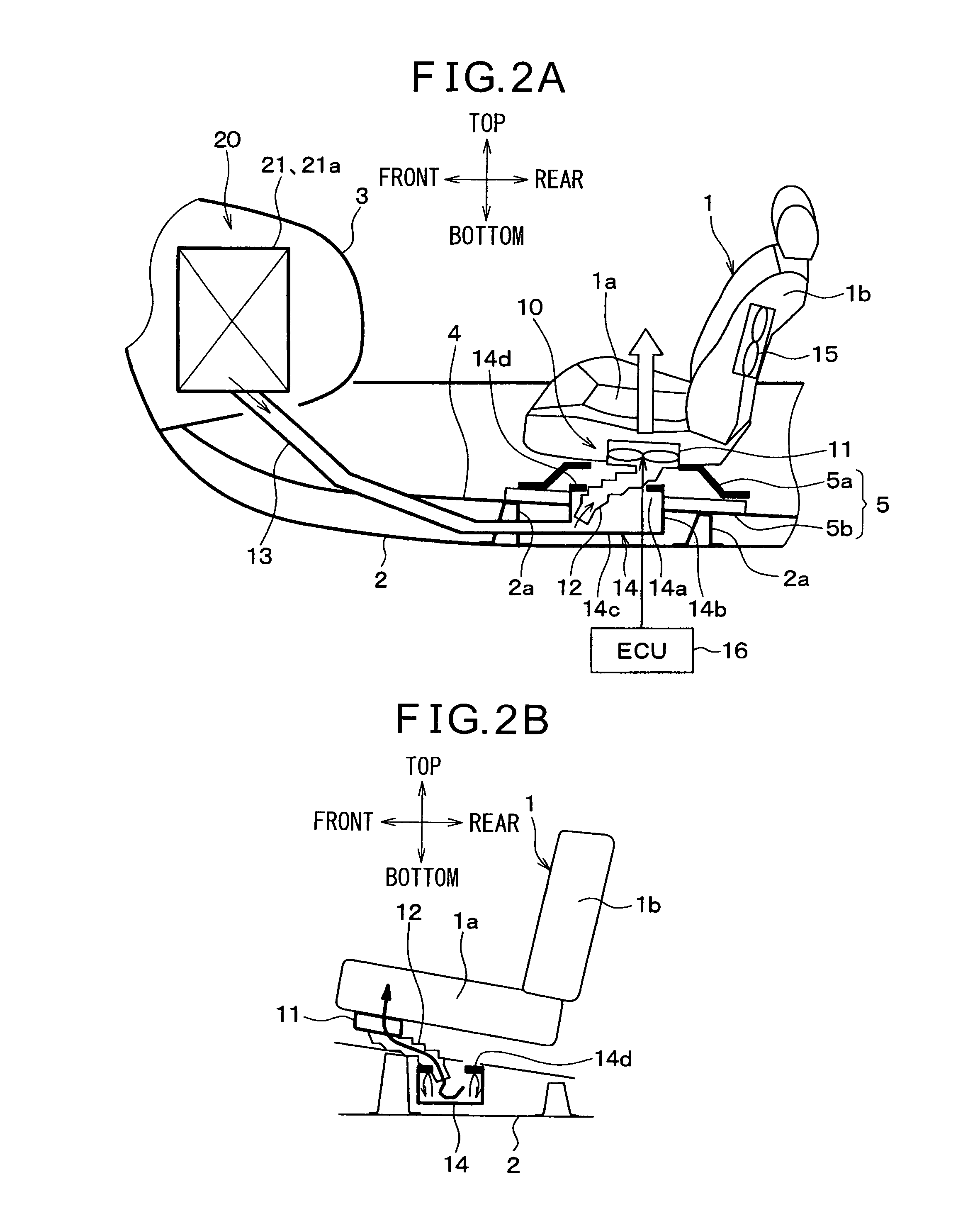Vehicular seat air-conditioning system
a seat air conditioner and seat technology, applied in the field of seat air conditioners, can solve the problems of heat loss increasing and temperature rising, and achieve the effect of suppressing the variation of cool air temperature and reducing heat loss
- Summary
- Abstract
- Description
- Claims
- Application Information
AI Technical Summary
Benefits of technology
Problems solved by technology
Method used
Image
Examples
first embodiment
[0041]Below, a first embodiment of the present invention will be explained with reference to FIG. 1A, FIG. 1B, and FIG. 1C. The present embodiment applies vehicular seat air-conditioning systems of the present invention to the front seats (driver's seat and front passenger's seat).
[0042]FIG. 1A shows the general configuration of a vehicular seat air-conditioning system according to the present embodiment. The four arrows in FIG. 1A show vertical and horizontal directions of the vehicle.
[0043]Each vehicular seat air-conditioning system 10 is configured to blow cool air which is supplied from a vehicular air-conditioning unit 20 for air-conditioning a cabin space from the surface of a seat 1 for front seat use.
[0044]A blower 11 of each vehicular seat air-conditioning system 10 is built into a seat top 1a of the seat 1. The air blown from the blower 11 passes through an air passage (not shown) which is formed inside of the seat top 1a (cushion material) and an air vent opening (not sho...
second embodiment
[0071]In the present second embodiment, as shown in FIG. 2A and FIG. 2B, the box-shaped part 14 in the first embodiment is formed with overhanging projections 14d which project out from the tops of the side walls 14b toward the inside of the opening part 14a. In the example of FIG. 2A and FIG. 2B, the projections 14d are formed at the top ends of the side walls 14b over the entire circumference of the opening part 14a.
[0072]Due to this, it is possible to facilitate the buildup of cool air at each box-shaped part 14 and keep cabin air from entering the box-shaped part 14 better and in turn is possible to further improve the air-conditioning ability of each vehicular seat air-conditioning system 10.
third embodiment
[0073]In the first embodiment, each seat air-conditioning duct 13 is directly connected to the air-conditioning case 21a, but in the present third embodiment, as shown in FIG. 3A, each seat air-conditioning duct 13 is connected to the air-conditioning case 21a through a rear face duct 22 forming the rear seat use blowing duct of the vehicular air-conditioning unit 20.
[0074]The rear face duct 22 extends from the air-conditioning case 21a toward the vehicle rear side. Specifically, the rear face duct 22 is arranged along a console 6 provided between the driver's seat and front passenger's seat between the driver's seat and front passenger's seat.
[0075]At the rear end of the rear face duct 22 (downstream side end), a rear face vent (not shown) is provided. The rear face vent mainly blows cool air toward the heads of the passengers at the rear seats. Note that, two sets of the rear face duct 22 and rear face vent are provided corresponding to the seat behind the driver's seat and the se...
PUM
 Login to View More
Login to View More Abstract
Description
Claims
Application Information
 Login to View More
Login to View More - R&D
- Intellectual Property
- Life Sciences
- Materials
- Tech Scout
- Unparalleled Data Quality
- Higher Quality Content
- 60% Fewer Hallucinations
Browse by: Latest US Patents, China's latest patents, Technical Efficacy Thesaurus, Application Domain, Technology Topic, Popular Technical Reports.
© 2025 PatSnap. All rights reserved.Legal|Privacy policy|Modern Slavery Act Transparency Statement|Sitemap|About US| Contact US: help@patsnap.com



